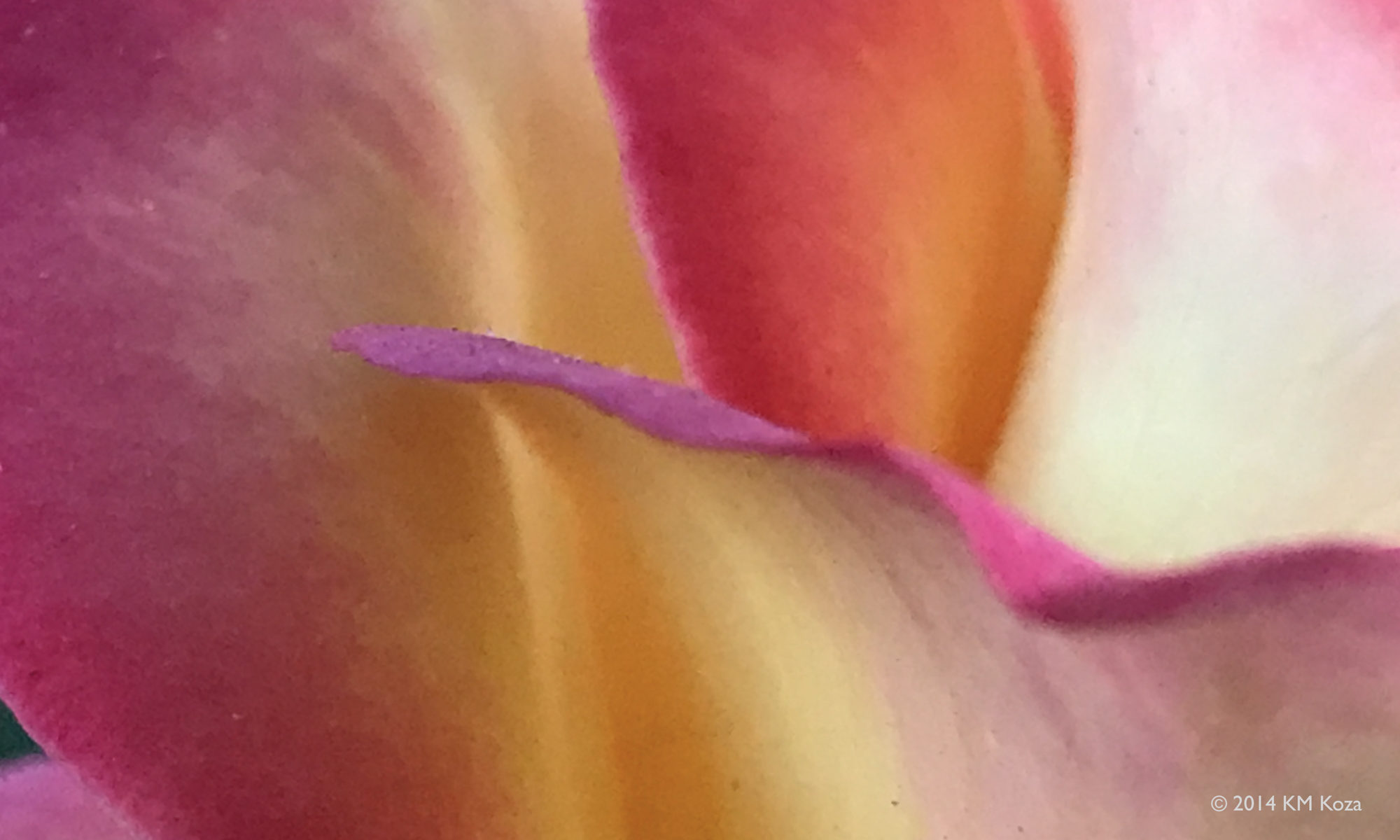My breath stopped. My mind went blank. My head jerked up slightly then froze, as did my body, motionless from the zap of powerful energy I did not expect. I stood and stared.
I had encountered, for the first time in person, a painting by Georgia O’Keefe.
This experience is important. It’s not just about O’Keefe’s art: I’ve had this experience when I’ve encountered paintings by other masters; original photos from great photographers; and magnificent art from other disciplines. And the experience is not about me.
It’s the experience that’s important. And the experience is important to consider now, in the Pandemic of 2020.
To explain, I’ll go back to the O’Keefe painting.
It was about 1985, and I was walking through the University of Arizona Art Museum’s permanent exhibit, which I knew housed an original painting or few of O’Keefe’s. The piece I mention, Red Canna, is famous. I had seen it on photographs, postcards, calendars, and other reproductions. In fact, reproductions of O’Keefe’s work abounded in the popular culture of the United States in the 1970’s and 80’s. Flowers and desertscapes were seemingly on everything, and even non-artists would call out “that’s an O’Keefe” when viewing posters, sometimes even naming the image. People thought they “knew” her art.
What I experienced in that first viewing of an original painting by O’Keefe was something I did not expect, despite the years of preparation: The lectures, the experiential lessons, the papers written, the books read in English classes (thanks J.C.); the hours of art history classes; the years watching my mother create; the shelves of philosophy I had read; and dozens of replicas of the painting I had seen.
Yes, I had heard of, mentally understood, written about the experience of art. I had contemplated the question “what is the difference between a work of art and a really good forgery, a copy?”
I had not experienced it so profoundly until that moment.
A true work of art has a presence. It has life. It conveys the spirit, the anima, the experience and feelings of the artist.
You can feel a work of art.
Yes, a poster, a high-quality digital photograph, a 3-D image can transmit the look, the colors, the detail, the intricacy of a work of art. However, no matter how good, how clean, how sharp the copy, the replica will not convey the same presence as the original masterpiece created at the hands of the master.
It’s similar to what spiritual teachers and mystic poets say: “If you write the word honey and lick the paper, is it the same as tasting a spoonful of honey?”
Honey and art must be tasted, experienced, in person.
It’s especially important to remember this at a time when we’re all at our computers, often for more hours a day than usual, and when, through those computers, we have the amazing opportunity to virtually visit great museums, concert halls, and artist studios. That the Pandemic of 2020 occurs at a time when we can shelter-in-place while viewing and hearing great works of art is absolutely amazing. I’m personally grateful, and thankful also that so many virtual halls and archives are now allowing us free entry.
So, yes, let’s use this opportunity and the online resources offered us to visit museums we may have always wanted to see — or perhaps never knew existed. Let’s listen to the orchestras of the world, see how potters work, view weavings we did not know were so intricate, look at the work of Gentileschi, Bonheur, Caravaggio, Anni Albers, and more, oh so many more. We can even read about the artists on Wikipedia, find their studios on Google Maps, and follow the rabbit hole of links to historical trivia of the artists’ lives.
All this is good; all this helps us expand our awareness of the world of art and intellectually understand artists and their context. But don’t make viewing quantity your goal. Don’t make intellectual understanding your goal. Don’t even make recognition your goal (apologies to all the art history teachers!).
Make experience your goal.
And to really experience a painting, a photo, any work of art, you must be with it in person. The experience is tangible, yet beyond the intellect, beyond quantification, beyond description.
So yes, use this time of online exploring to visit the museums, libraries, galleries, concert halls streaming to you. Peruse the images, the sounds. And let the online viewing and recognition kindle within you a desire to experience, in person, at least a few of the places, a few of the masterpieces, a few of the museums.
After the travel bans and the quarantines end, seek and have an in-person experience of a masterpiece whose replica you discovered online. If you can’t travel to a distant place to experience the great work you found online, at least start by visiting a local art museum or gallery.
And for now, continue the online discovery, and perhaps enjoy a spoonful of honey!
###

